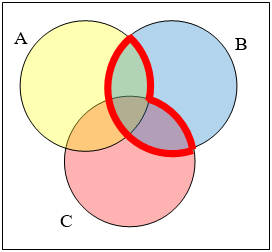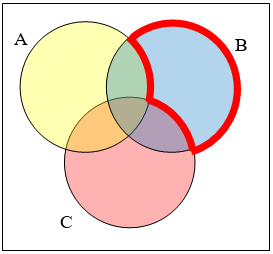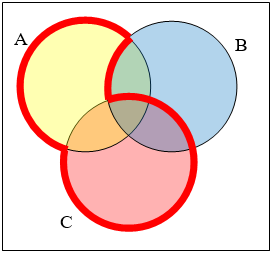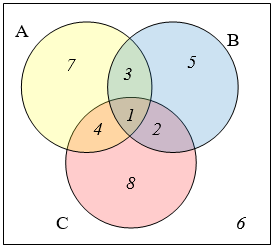13.5: Exercises
- Page ID
- 34259
\( \newcommand{\vecs}[1]{\overset { \scriptstyle \rightharpoonup} {\mathbf{#1}} } \)
\( \newcommand{\vecd}[1]{\overset{-\!-\!\rightharpoonup}{\vphantom{a}\smash {#1}}} \)
\( \newcommand{\dsum}{\displaystyle\sum\limits} \)
\( \newcommand{\dint}{\displaystyle\int\limits} \)
\( \newcommand{\dlim}{\displaystyle\lim\limits} \)
\( \newcommand{\id}{\mathrm{id}}\) \( \newcommand{\Span}{\mathrm{span}}\)
( \newcommand{\kernel}{\mathrm{null}\,}\) \( \newcommand{\range}{\mathrm{range}\,}\)
\( \newcommand{\RealPart}{\mathrm{Re}}\) \( \newcommand{\ImaginaryPart}{\mathrm{Im}}\)
\( \newcommand{\Argument}{\mathrm{Arg}}\) \( \newcommand{\norm}[1]{\| #1 \|}\)
\( \newcommand{\inner}[2]{\langle #1, #2 \rangle}\)
\( \newcommand{\Span}{\mathrm{span}}\)
\( \newcommand{\id}{\mathrm{id}}\)
\( \newcommand{\Span}{\mathrm{span}}\)
\( \newcommand{\kernel}{\mathrm{null}\,}\)
\( \newcommand{\range}{\mathrm{range}\,}\)
\( \newcommand{\RealPart}{\mathrm{Re}}\)
\( \newcommand{\ImaginaryPart}{\mathrm{Im}}\)
\( \newcommand{\Argument}{\mathrm{Arg}}\)
\( \newcommand{\norm}[1]{\| #1 \|}\)
\( \newcommand{\inner}[2]{\langle #1, #2 \rangle}\)
\( \newcommand{\Span}{\mathrm{span}}\) \( \newcommand{\AA}{\unicode[.8,0]{x212B}}\)
\( \newcommand{\vectorA}[1]{\vec{#1}} % arrow\)
\( \newcommand{\vectorAt}[1]{\vec{\text{#1}}} % arrow\)
\( \newcommand{\vectorB}[1]{\overset { \scriptstyle \rightharpoonup} {\mathbf{#1}} } \)
\( \newcommand{\vectorC}[1]{\textbf{#1}} \)
\( \newcommand{\vectorD}[1]{\overrightarrow{#1}} \)
\( \newcommand{\vectorDt}[1]{\overrightarrow{\text{#1}}} \)
\( \newcommand{\vectE}[1]{\overset{-\!-\!\rightharpoonup}{\vphantom{a}\smash{\mathbf {#1}}}} \)
\( \newcommand{\vecs}[1]{\overset { \scriptstyle \rightharpoonup} {\mathbf{#1}} } \)
\( \newcommand{\vecd}[1]{\overset{-\!-\!\rightharpoonup}{\vphantom{a}\smash {#1}}} \)
\(\newcommand{\avec}{\mathbf a}\) \(\newcommand{\bvec}{\mathbf b}\) \(\newcommand{\cvec}{\mathbf c}\) \(\newcommand{\dvec}{\mathbf d}\) \(\newcommand{\dtil}{\widetilde{\mathbf d}}\) \(\newcommand{\evec}{\mathbf e}\) \(\newcommand{\fvec}{\mathbf f}\) \(\newcommand{\nvec}{\mathbf n}\) \(\newcommand{\pvec}{\mathbf p}\) \(\newcommand{\qvec}{\mathbf q}\) \(\newcommand{\svec}{\mathbf s}\) \(\newcommand{\tvec}{\mathbf t}\) \(\newcommand{\uvec}{\mathbf u}\) \(\newcommand{\vvec}{\mathbf v}\) \(\newcommand{\wvec}{\mathbf w}\) \(\newcommand{\xvec}{\mathbf x}\) \(\newcommand{\yvec}{\mathbf y}\) \(\newcommand{\zvec}{\mathbf z}\) \(\newcommand{\rvec}{\mathbf r}\) \(\newcommand{\mvec}{\mathbf m}\) \(\newcommand{\zerovec}{\mathbf 0}\) \(\newcommand{\onevec}{\mathbf 1}\) \(\newcommand{\real}{\mathbb R}\) \(\newcommand{\twovec}[2]{\left[\begin{array}{r}#1 \\ #2 \end{array}\right]}\) \(\newcommand{\ctwovec}[2]{\left[\begin{array}{c}#1 \\ #2 \end{array}\right]}\) \(\newcommand{\threevec}[3]{\left[\begin{array}{r}#1 \\ #2 \\ #3 \end{array}\right]}\) \(\newcommand{\cthreevec}[3]{\left[\begin{array}{c}#1 \\ #2 \\ #3 \end{array}\right]}\) \(\newcommand{\fourvec}[4]{\left[\begin{array}{r}#1 \\ #2 \\ #3 \\ #4 \end{array}\right]}\) \(\newcommand{\cfourvec}[4]{\left[\begin{array}{c}#1 \\ #2 \\ #3 \\ #4 \end{array}\right]}\) \(\newcommand{\fivevec}[5]{\left[\begin{array}{r}#1 \\ #2 \\ #3 \\ #4 \\ #5 \\ \end{array}\right]}\) \(\newcommand{\cfivevec}[5]{\left[\begin{array}{c}#1 \\ #2 \\ #3 \\ #4 \\ #5 \\ \end{array}\right]}\) \(\newcommand{\mattwo}[4]{\left[\begin{array}{rr}#1 \amp #2 \\ #3 \amp #4 \\ \end{array}\right]}\) \(\newcommand{\laspan}[1]{\text{Span}\{#1\}}\) \(\newcommand{\bcal}{\cal B}\) \(\newcommand{\ccal}{\cal C}\) \(\newcommand{\scal}{\cal S}\) \(\newcommand{\wcal}{\cal W}\) \(\newcommand{\ecal}{\cal E}\) \(\newcommand{\coords}[2]{\left\{#1\right\}_{#2}}\) \(\newcommand{\gray}[1]{\color{gray}{#1}}\) \(\newcommand{\lgray}[1]{\color{lightgray}{#1}}\) \(\newcommand{\rank}{\operatorname{rank}}\) \(\newcommand{\row}{\text{Row}}\) \(\newcommand{\col}{\text{Col}}\) \(\renewcommand{\row}{\text{Row}}\) \(\newcommand{\nul}{\text{Nul}}\) \(\newcommand{\var}{\text{Var}}\) \(\newcommand{\corr}{\text{corr}}\) \(\newcommand{\len}[1]{\left|#1\right|}\) \(\newcommand{\bbar}{\overline{\bvec}}\) \(\newcommand{\bhat}{\widehat{\bvec}}\) \(\newcommand{\bperp}{\bvec^\perp}\) \(\newcommand{\xhat}{\widehat{\xvec}}\) \(\newcommand{\vhat}{\widehat{\vvec}}\) \(\newcommand{\uhat}{\widehat{\uvec}}\) \(\newcommand{\what}{\widehat{\wvec}}\) \(\newcommand{\Sighat}{\widehat{\Sigma}}\) \(\newcommand{\lt}{<}\) \(\newcommand{\gt}{>}\) \(\newcommand{\amp}{&}\) \(\definecolor{fillinmathshade}{gray}{0.9}\)1. List out the elements of the set “The letters of the word Mississipi”
2. List out the elements of the set “Months of the year”
3. Write a verbal description of the set \(\{3,6,9\}\)
4. Write a verbal description of the set \(\{a, i, e, 0, u\}\)
5. Is \(\{1,3,5\}\) a subset of the set of odd integers?
6. Is \(\{A, B, C\}\)a subset of the set of letters of the alphabet?
For problems 7-12, consider the sets below, and indicate if each statement is true or false.
\(A=\{1,2,3,4,5\} \quad B=\{1,3,5\} \quad C=\{4,6\} \quad U=\{\text { numbers from } 0 \text { to } 10\}\)
7. \(3 \in B\)
8. \(5 \in C\)
9. \(B \subset A\)
10. \(C \subset A\)
11. \(C \subset B\)
12. \(C \subset U\)
Using the sets from above, and treating \(U\) as the Universal set, find each of the following:
13. \(A \cup B\)
14. \(A \cup C\)
15. \(A \cap C\)
16. \(B \cap C\)
17. \(A^{c}\)
18. \(B^{c}\)
Let \(D=\{b, a, c, k\}, \quad E=\{t, a, s, k\}, \quad F=\{b, a, t, h\}\). Using these sets, find the following:
19. \(D^{c} \cap E\)
20. \(F^{c} \cap D\)
21. \((D \cap E) \cup F\)
22. \(D \cap(E \cup P)\)
23. \((F \cap E)^{c} \cap D\)
24. \((D \cup E)^{c} \cap F\)
Create a Venn diagram to illustrate each of the following:
25. \((F \cap E) \cup D\)
26. \((D \cup E)^{c} \cap F\)
27. \(\left(F^{c} \cap E^{\prime}\right) \cap D\)
28. \((D \cup E) \cup F\)
Write an expression for the shaded region.
29.

30.

31.

32.

Let \(A=\{1,2,3,4,5\} \quad B=\{1,3,5\} \quad C=\{4,6\}\). Find the cardinality of the given set.
33. \(\mathrm{n}(A)\)
34. \(\mathrm{n}(B)\)
35. \(\mathrm{n}(A \cup C)\)
36. \(\mathrm{n}(A \cap C)\)
The Venn diagram here shows the cardinality of each set. Use this in 37-40 to find the cardinality of given set.

37. \(\mathrm{n}(A \cap C)\)
38. \(\mathrm{n}(B \cup C)\)
39. \(\mathrm{n}\left(A \cap B \cap C^{2}\right)\)
40. \(\mathrm{n}\left(A \cap B^{c} \cap C\right)\)
41. If \(n(G)=20, n(H)=30, n(G \cap H)=5,\) find \(n(G \cup H)\)
42. If \(n(G)=5, n(H)=8, n(G \cap H)=4,\) find \(n(G \cup H)\)
43. A survey was given asking whether they watch movies at home from Netflix, Redbox, or a video store. Use the results to determine how many people use Redbox.
\(\begin{array}{ll} \text{52 only use Netflix} & \text{62 only use Redbox} \\ \text{24 only use a video store} & \text{16 use only a video store and Redbox} \\ \text{48 use only Netflix and Redbox} & \text{30 use only a video store and Netflix} \\ \text{10 use all three} & \text{25 use none of these} \end{array}\)
44. A survey asked buyers whether color, size, or brand influenced their choice of cell phone. The results are below. How many people were influenced by brand?
\(\begin{array}{ll} \text{5 only said color} & \text{8 only said size} \\ \text{16 only said brand} & \text{20 said only color and size} \\ \text{42 said only color and brand} & \text{53 said only size and brand} \\ \text{102 said all three} & \text{20 said none of these} \end{array}\)
45. Use the given information to complete a Venn diagram, then determine: a) how many students have seen exactly one of these movies, and b) how many had seen only Star Wars.
\(\begin{array}{ll} \text{18 had seen The Matrix (M)} & \text{24 had seen Star Wars (SW)} \\ \text{20 had seen Lord of the Rings (LotR)} & \text{10 had seen M and SW} \\ \text{14 had seen LotR and SW } & \text{12 had seen M and LotR} \\ \text{6 had seen all three} & \text{} \end{array}\)
46. A survey asked people what alternative transportation modes they use. Using the data to complete a Venn diagram, then determine: a) what percent of people only ride the bus, and b) how many people don’t use any alternate transportation.
\(\begin{array}{ll} \text{30% use the bus} & \text{20% ride a bicycle} \\ \text{25% walk} & \text{5% use the bus and ride a bicycle} \\ \text{10% ride a bicycle and walk} & \text{12% use the bus and walk} \\ \text{2% use all three} & \text{} \end{array}\)


